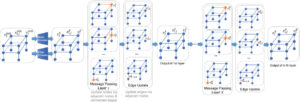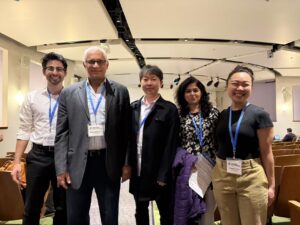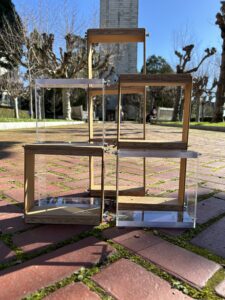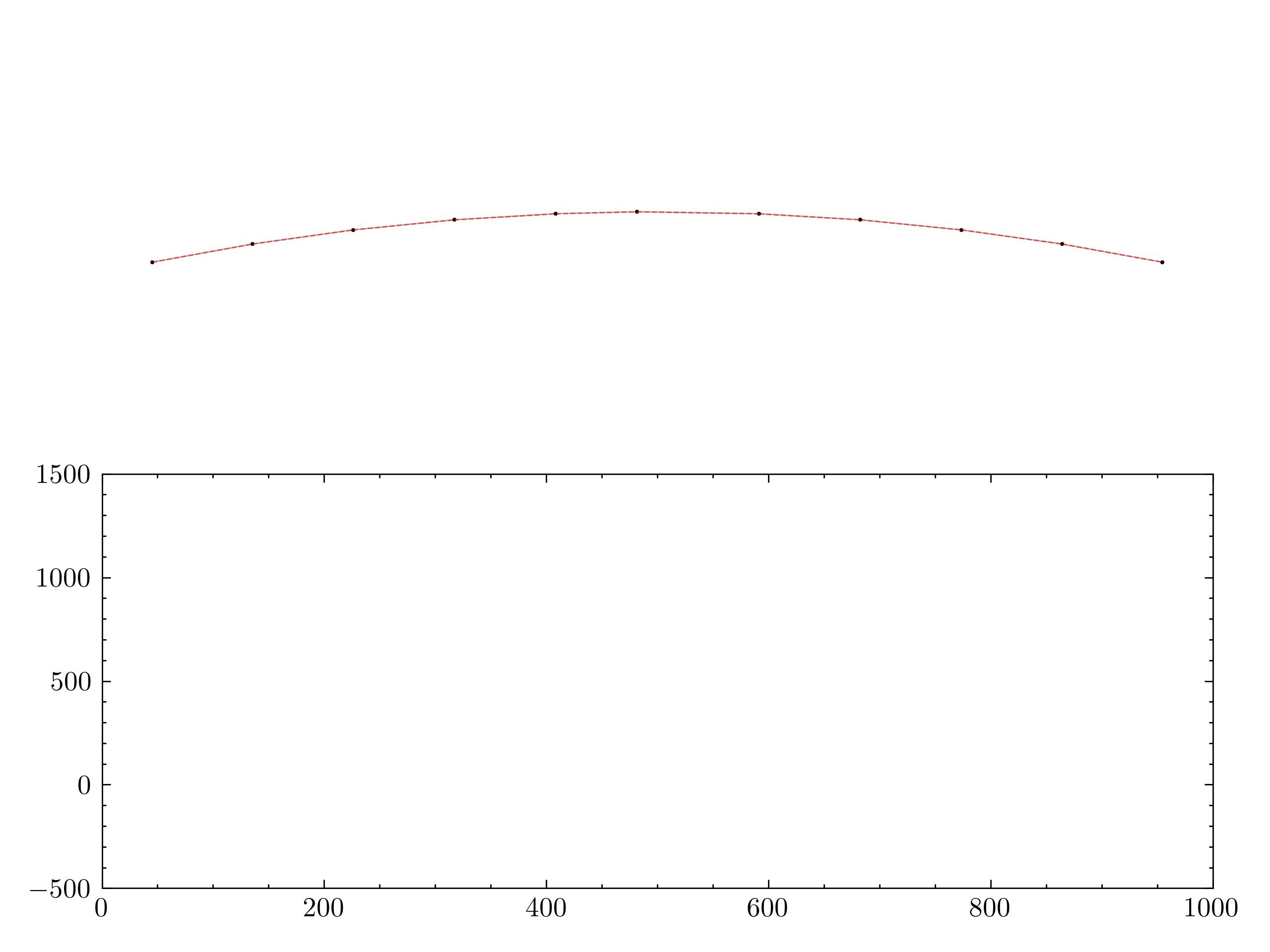Ensuring the fire safety of building structures is paramount for their long-term stability and the safety of occupants. However, the complexity of evaluating a structure’s adherence to fire safety requirements presents a significant challenge. The sheer number of potential fire origin points within a building makes comprehensive simulation of every scenario prohibitively expensive and time-consuming. […]
News
Simulating finite rotations with OpenSees
Very few mainstream finite element analysis programs offer elements that directly interpolate a finite rotation field. This is because finite rotations violate a foundational requirement of the finite element method: they do not form a vector space. Rotation composition is noncommutative, so interpolation techniques that assume linear superposition fail. As a result, most beam and […]
STAIRlab Welcomes Alumni to the PEER Annual Meeting
We had the pleasure of reuniting with our treasured alumni and collaborators, Yuqing Gao (Associate Professor at Tongji University) and Sifat Muin (Research Assistant Professor at the University of Southern California) at the PEER Annual Meeting on March 25-26, 2025. This meeting, hosted by the Pacific Earthquake Engineering Research Center (PEER), featured research from several […]
The STAIRlab/PEER Mini Shake Table Kit
STAIRlab members have been developing and testing a kit for mini shake table experiments, featuring all-new modular structural models and IMU and non-contact sensing strategies.
Upcoming Caltrans webinar showcasing BRACE2
Caltrans will be hosting a webinar featuring Prof. Mosalam on March 12, 2025. He will be discussing the how Bridge Rapid Assessment Center for Extreme Events (BRACE2) project uses state-of-the art physics-based and data-driven simulations, communication, and sensing to provide real-time assessment of the structural condition of the monitored bridges immediately following an earthquake. The […]
Improved static integrators in OpenSeesRT
Members of the STAIRLab have recently contributed several improvements to the static integrators in OpenSeesRT. This notably includes implementing determinants in several important linear system classes, which allows integrators like ArcLength and MinUnbalDispNorm to correctly track equilibrium paths in nonlinear static continuation analysis. The improvements for the arc-length method are documented here. A new example […]
STAIRLab at the 2025 NHERI Computational Symposium
We are excited to announce that two members of the STAIR Lab will be presenting their research at the upcoming 2025 NHERI Computational Symposium. This symposium gathers leading experts in computational modeling and simulation to discuss advances in research and technology for infrastructure resilience. Our lab’s contributions highlight innovative work in system identification and finite […]
Interview with Prof. Mosalam — Baltimore collapse investigation.
Prof. Mosalam was recently interviewed by CBS where he shared his insights into the recent collapse of Baltimore’s Francis Scott Key Bridge.
STAIRLab is now on Github
STAIRlab is now on Github! Visit https://github.com/STAIRlab to explore the open-source projects we’ve been working on. Exciting repositories include: xara Nonlinear finite element analysis mdof Optimized system identification library sdof Optimized integration for single-degree-of-freedom systems
PEER HUB IMAGENET (PHI) is open-source!
PEER HUB IMAGENET (PHI) is made publicly available. Related PEER report can be accessed here.








